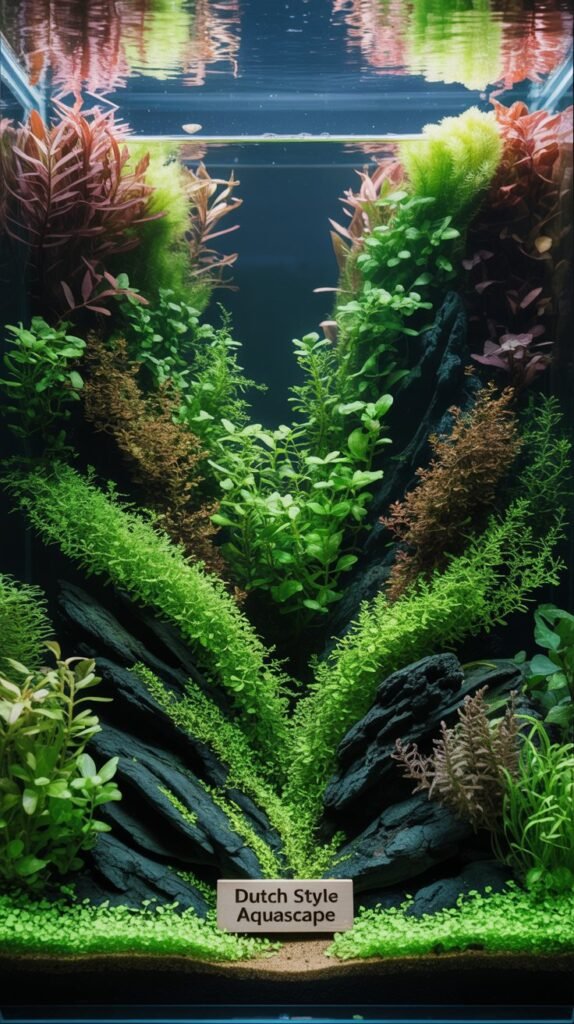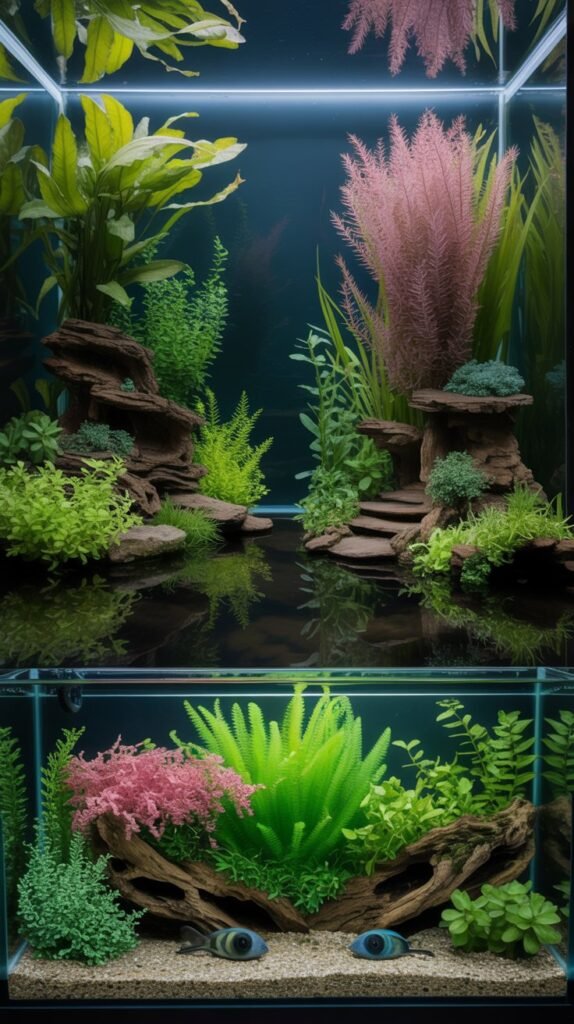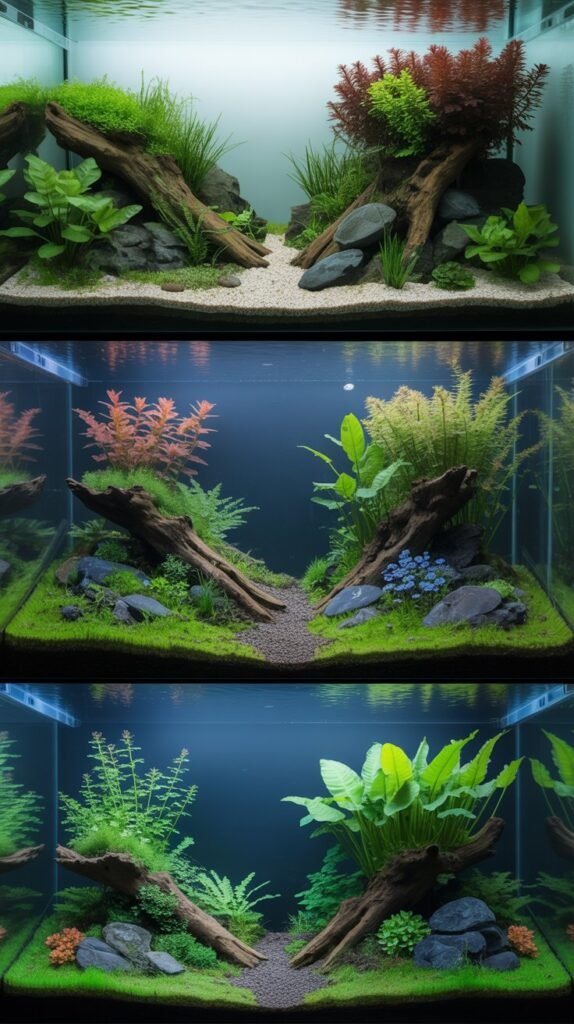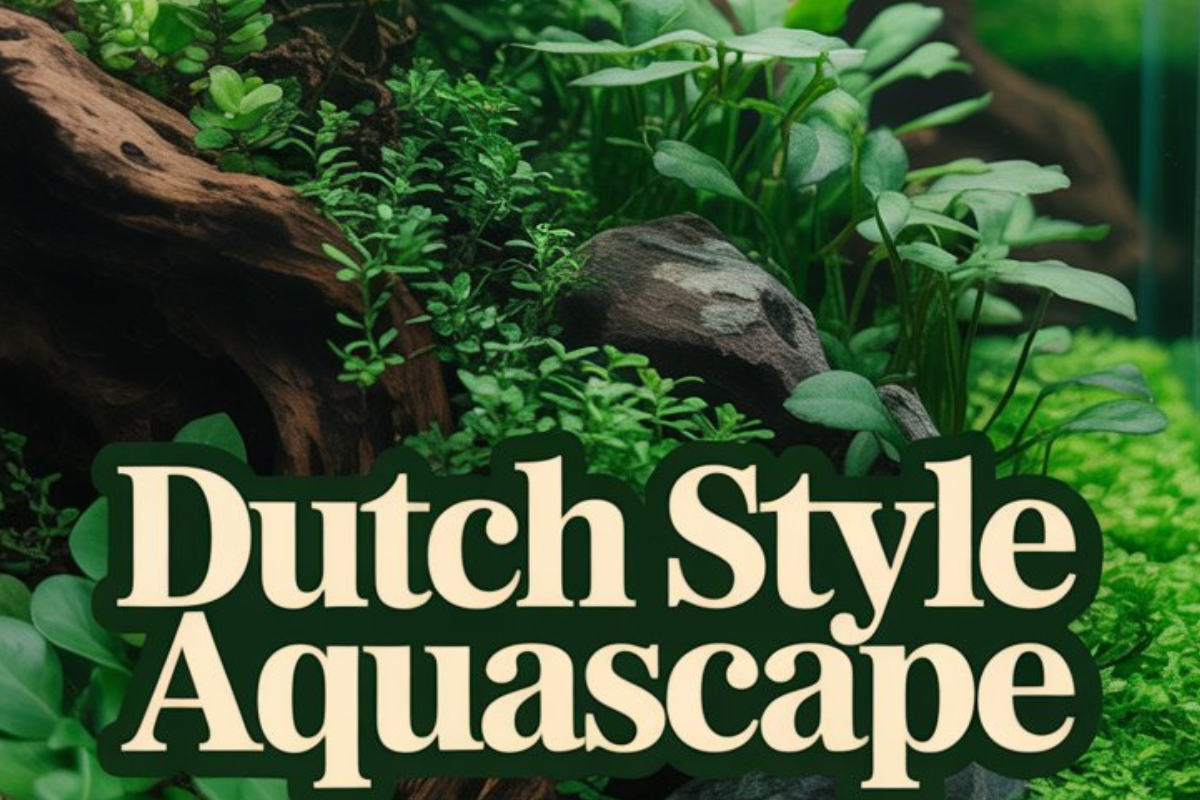Aquascaping is an art that combines creativity, horticulture, and aquarium science to design stunning underwater landscapes. Among the various aquascaping styles, the Dutch style aquascape holds a special place because of its structured, colorful, and garden-like appearance. Originating in the Netherlands in the 1930s, this method emphasizes plant diversity, contrast, and arrangement rather than hardscape dominance.
In this article, we’ll explore the history, principles, setup, and maintenance of the Dutch aquascape in detail. Whether you’re a beginner or an experienced aquascaper, this guide will help you understand how to design and maintain a thriving Dutch-style planted aquarium.
🌿 What is a Dutch Style Aquascape?
The Dutch style aquascape is often referred to as the “underwater garden.” Unlike other styles such as Iwagumi or Nature Aquariums, which rely heavily on rocks and driftwood, Dutch aquascaping focuses almost entirely on plants.
The design is inspired by traditional Dutch flower gardens, with rows, layers, and contrasts playing a major role. The tank looks like a perfectly manicured botanical garden, where different plant species are carefully arranged to highlight their colors, textures, and heights.
Key features of Dutch aquascapes:
- Minimal or no hardscape (rocks, wood).
- High plant diversity (up to 20 or more species).
- Strong use of contrasting colors, shapes, and textures.
- Tiered planting with foreground, midground, and background.
- Use of focal points, “streets,” and groups of plants.
🌱 History of Dutch Style Aquascaping

The Dutch style originated in the 1930s in the Netherlands when aquarists began experimenting with aquatic plants in decorative tanks. In 1930, the NBAT (Nederlandse Bond Aqua Terra) was founded, which created rules and competitions for aquarium displays. The Dutch style became the dominant form of aquascaping for decades before the rise of the Nature Aquarium style by Takashi Amano in the 1990s.
Today, the Dutch style is still highly respected and even judged by strict criteria in competitions. It requires discipline, planning, and plant knowledge, making it both challenging and rewarding.
🌿 Key Principles of Dutch Style Aquascape
To create a Dutch-style aquascape, several design rules and principles are followed:
1. Plant Diversity
- A true Dutch aquascape may have 20–30 different plant species.
- No two similar plants are placed next to each other; contrast is essential.
- Each plant should have a specific role in the overall composition.
2. Grouping of Plants
- Plants are arranged in groups (bushes) of the same species.
- Groups are carefully sized (usually 10–15 cm wide) and shaped for visual balance.
- Avoid mixing too many plants in a single group.
3. Use of “Streets”
- “Streets” are visual corridors created by planting rows of plants that recede into the background.
- They give the illusion of depth and perspective, much like paths in a garden.
4. Contrast & Color Balance
- Contrast is created by placing red plants next to green plants, or fine-leaved species next to broad-leaved ones.
- Bright red plants are often used as focal points but sparingly to avoid overpowering the scene.
5. Layering & Height Arrangement
- Foreground: small, carpeting plants (e.g., Hemianthus callitrichoides, Staurogyne repens).
- Midground: medium plants with bushy growth (e.g., Rotala rotundifolia, Hygrophila species).
- Background: tall stem plants (e.g., Ludwigia, Cabomba, Limnophila).
6. Minimal Hardscape
- Unlike Nature Aquariums, Dutch tanks rarely use rocks or wood.
- The plants themselves are the structure and design.
🐠 Choosing the Right Tank Size for Dutch Style
The Dutch style works best in medium to large aquariums (75–300 liters or more). Larger tanks allow for greater plant diversity and layering.
- Small tanks (nano aquariums) can also be done but are more challenging since space limits the number of plant species.
- Tall tanks may not be ideal because light penetration decreases with depth, making it harder for foreground plants to thrive.
💡 Equipment Needed for a Dutch Style Aquascape

A successful Dutch aquascape requires proper equipment to support dense plant growth:
1. Aquarium Lighting
- Bright and full-spectrum LED lighting is essential.
- Light intensity should be strong (PAR 40–60 at substrate level) to support red plants.
- A photoperiod of 8–10 hours daily works best.
2. CO₂ Injection
- Dutch aquascapes are high-tech setups.
- Pressurized CO₂ systems are highly recommended for healthy, vibrant plants.
- Aim for 20–30 ppm CO₂ concentration.
3. Filtration
- A strong external canister filter is preferred for efficient water circulation.
- Biological and mechanical filtration helps maintain water clarity.
4. Substrate
- Nutrient-rich substrates such as ADA Amazonia, Tropica Soil, or Fluval Stratum are ideal.
- Root tabs can be used for heavy root feeders like Echinodorus.
5. Fertilization
- Daily or weekly liquid fertilizers (macro + micro nutrients).
- Iron supplements enhance red plant coloration.
🌿 Best Plants for Dutch Style Aquascape
Plant selection is the heart of Dutch aquascaping. Here are popular categories and examples:
Foreground Plants
- Hemianthus callitrichoides (Dwarf Baby Tears)
- Eleocharis parvula (Dwarf Hairgrass)
- Staurogyne repens
Midground Plants
- Hygrophila polysperma
- Alternanthera reineckii “Mini”
- Rotala rotundifolia
- Cryptocoryne wendtii
Background Plants
- Ludwigia repens
- Limnophila sessiliflora
- Cabomba caroliniana
- Echinodorus species
Accent / Focal Plants
- Alternanthera reineckii
- Rotala macrandra
- Ammania gracilis
🐟 Best Fish for Dutch Style Aquascape

Fish should complement the plants without distracting too much. Popular options include:
- Neon Tetras
- Cardinal Tetras
- Rummy Nose Tetras
- Harlequin Rasboras
- Otocinclus catfish (for algae control)
- Dwarf Gourami or Apistogramma (as centerpiece fish)
Avoid large or disruptive fish that may uproot plants.
🛠️ Step-by-Step Setup Guide
- Choose your tank size and equipment.
- Add nutrient-rich substrate and slope it from front to back for depth.
- Install CO₂ system and filtration.
- Plan plant layout on paper (foreground, midground, background).
- Plant in groups of the same species.
- Fill tank slowly to avoid uprooting plants.
- Run aquarium cycle before adding fish.
- Introduce fish gradually after water parameters stabilize.
- Maintain with trimming and fertilization.
🧹 Maintenance of Dutch Style Aquascape
A Dutch-style tank requires regular maintenance to remain vibrant and balanced:
- Weekly trimming of stem plants to prevent overgrowth.
- Replant trimmed tops to keep bushes dense.
- Water changes (30–50% weekly) to maintain water quality.
- Algae management using Amano shrimp, Otocinclus, and controlled lighting.
- Nutrient dosing adjusted according to plant needs.
✅ Advantages of Dutch Style Aquascape
- Stunning, colorful, and vibrant appearance.
- Encourages plant diversity and experimentation.
- Acts as a living piece of art in your home.
- Provides excellent hiding places for fish and shrimp.
- Can win competitions due to its established prestige.
⚠️ Challenges of Dutch Style Aquascape
- Requires high maintenance and dedication.
- Needs strong lighting, CO₂, and fertilization.
- Can be expensive due to plant variety.
- Not ideal for beginners without plant care experience.
🌎 Dutch Style vs Nature Aquarium
| Feature | Dutch Style | Nature Aquarium |
|---|---|---|
| Focus | Plants (garden style) | Hardscape (rocks, wood) |
| Origin | Netherlands (1930s) | Japan (1990s) |
| Layout | Rows, streets, grouping | Natural landscapes |
| Plants | High diversity (20+) | Fewer, simple layouts |
| Difficulty | High | Medium |
❓ FAQs about Dutch Style Aquascape
Q1. Can beginners try Dutch style aquascaping?
Yes, but it’s challenging. Beginners should start with low-maintenance plants and fewer species before attempting a full Dutch-style setup.
Q2. Do I need CO₂ for a Dutch aquascape?
Yes, CO₂ injection is strongly recommended since many Dutch-style plants are high-demand species that require stable CO₂ levels.
Q3. How many plant species are needed for a Dutch-style aquarium?
Typically 20–30 species, but even 10–15 species can create a beautiful Dutch-inspired tank.
Q4. Can I keep shrimp in a Dutch aquascape?
Yes, shrimp such as Amano shrimp and Cherry shrimp help control algae and complement the aquascape.
Q5. How long does it take to establish a Dutch-style aquascape?
It usually takes 2–3 months for plants to grow and fill in properly, creating the dense, garden-like appearance.
Q6. What is the minimum tank size for Dutch aquascaping?
While you can attempt it in a nano tank, a minimum of 75 liters (20 gallons) is recommended to showcase proper plant diversity.
🎯 Final Thoughts
The Dutch style aquascape is a timeless and elegant form of aquascaping that transforms an aquarium into a lush, colorful underwater garden. Though demanding in terms of maintenance, equipment, and plant care, the end result is breathtaking and worth the effort.
By understanding its principles—plant diversity, grouping, streets, and layering—you can create a true Dutch masterpiece in your aquarium. Whether you’re entering competitions or simply want a beautiful planted tank at home, the Dutch style is one of the most rewarding aquascaping journeys you can embark upon.

